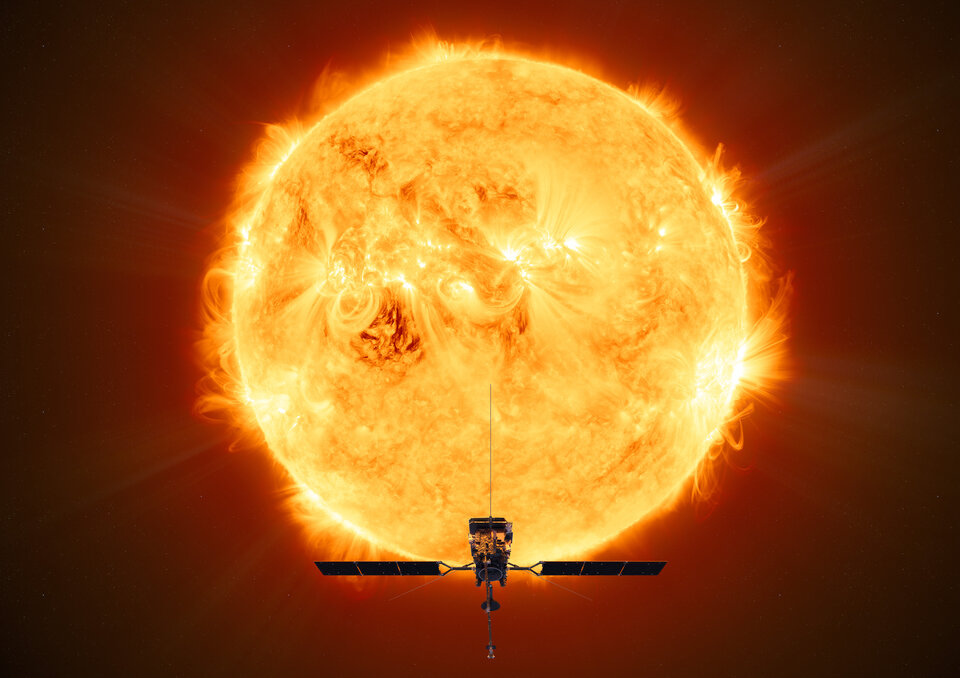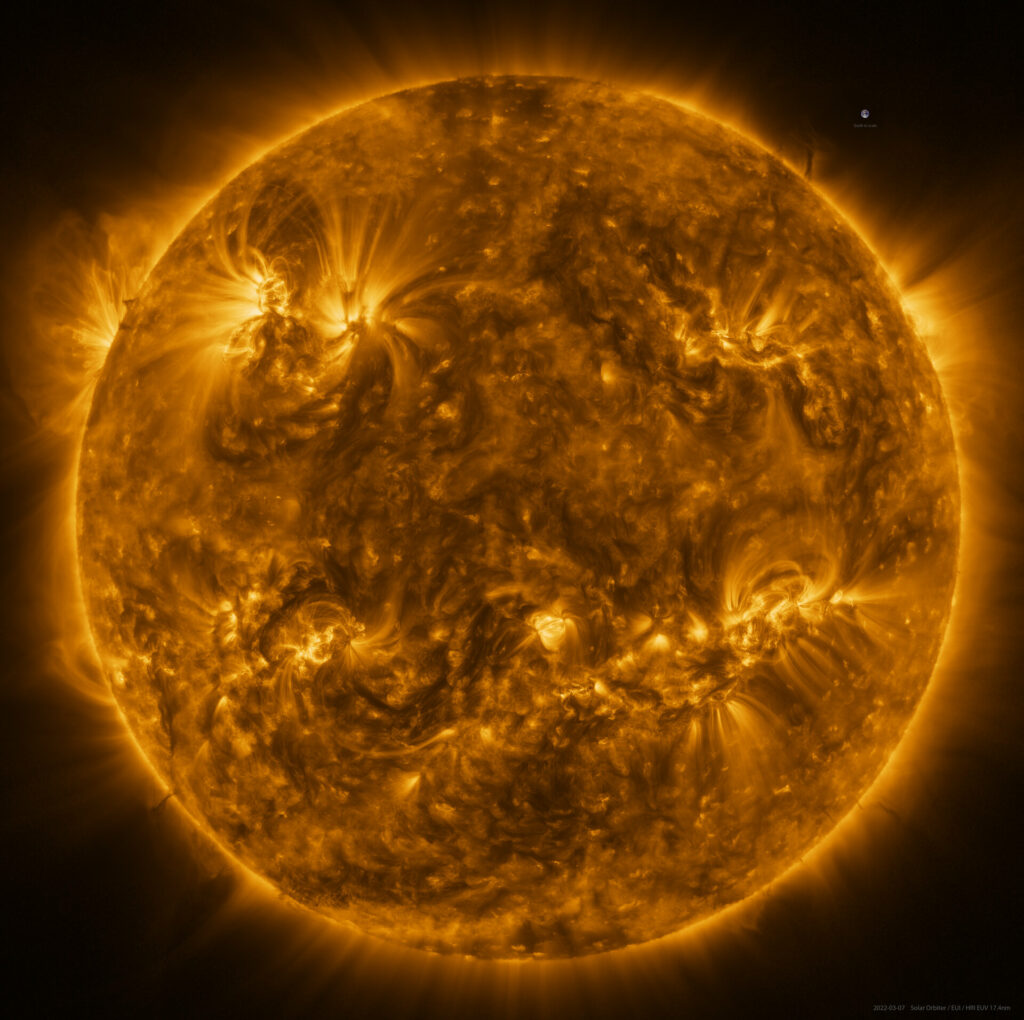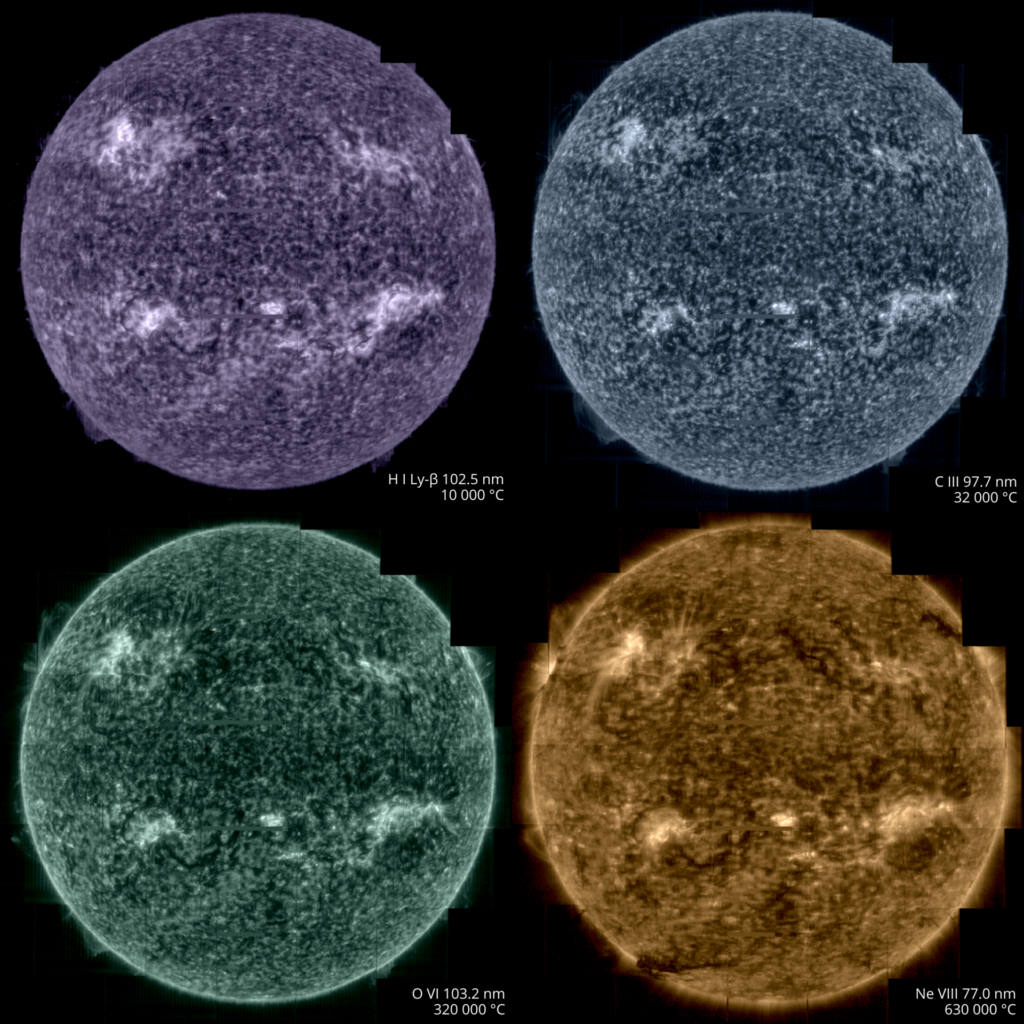The European Space Agency (ESA) has published several images of the Sun taken on March 7 this year by the Solar Orbiter probe. To date, these photos are the most detailed portraits of our luminary, allowing us to see a number of details of its surface and the upper layers of the atmosphere.
Solar Orbiter Mission Objectives
Solar Orbiter was launched in 2020. The probe is designed to study the inner part of the heliosphere and the emerging solar wind, as well as to observe the polar regions of our luminary that are not visible from Earth. Currently, Solar Orbiter is approaching the perihelion of its orbit (~50 million km), which provided it with unique opportunities to photograph the Sun.

Unique portrait of the Sun
The images published by ESA were taken when the Solar Orbiter was “halfway” between the Earth and the Sun. Thanks to the high resolution of its EUI (Extreme Ultraviolet Imager) camera, the probe needed to take 25 separate images of the solar surface (it took four hours). Combining them, the researchers obtained a unique portrait of our luminary containing 83 million pixels.

The Solar Orbiter image shows a star at a wavelength of 17 nm (extreme ultraviolet). It shows a number of details of the visible surface of the Sun, called the photosphere. Prominences also were photographed. In order to understand the scale, an image of the Earth was added to the photo (the upper right part of the frame).
ESA also published several images taken by the SPICE spectrometer. They demonstrate different elements of the solar atmosphere. Purple color corresponds to hydrogen heated to 10,000 °C, blue — carbon (32,000 °C), green — oxygen (320,000 °C), yellow — neon (630,000 °C).

Solar Orbiter will pass the perihelion of its orbit on March 26. It is expected that the preliminary results of its observations and the images taken during the approach to the Sun will be published by ESA in mid-April.
According to https://www.esa.int
